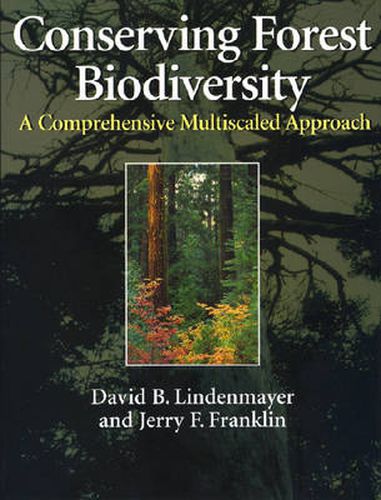Readings Newsletter
Become a Readings Member to make your shopping experience even easier.
Sign in or sign up for free!
You’re not far away from qualifying for FREE standard shipping within Australia
You’ve qualified for FREE standard shipping within Australia
The cart is loading…






While most efforts at biodiversity conservation have focused primarily on protected areas and reserves, the unprotected lands surrounding those areas - the matrix - are equally important to preserving global biodiversity and maintaining forest health. In this volume, leading forest scientists David B. Lindenmayer and Jerry F. Franklin argue that the conservation of forest biodiversity requires a comprehensive and multiscaled approach that includes both reserve and non-reserve areas. They lay the foundations for such a strategy, bringing together the latest scientific information on landscape ecology, forestry, conservation biology, and related disciplines as they examine: the importance of the matrix in key areas of ecology such as metapopulation dynamics, habitat fragmentation, and landscape connectivity; general principles for matrix management; using natural disturbance regimes to guide human disturbance; landscape-level and stand-level elements of matrix management; the role of adaptive management and monitoring; and social dimensions and tensions in implementing matrix-based forest management.
$9.00 standard shipping within Australia
FREE standard shipping within Australia for orders over $100.00
Express & International shipping calculated at checkout
While most efforts at biodiversity conservation have focused primarily on protected areas and reserves, the unprotected lands surrounding those areas - the matrix - are equally important to preserving global biodiversity and maintaining forest health. In this volume, leading forest scientists David B. Lindenmayer and Jerry F. Franklin argue that the conservation of forest biodiversity requires a comprehensive and multiscaled approach that includes both reserve and non-reserve areas. They lay the foundations for such a strategy, bringing together the latest scientific information on landscape ecology, forestry, conservation biology, and related disciplines as they examine: the importance of the matrix in key areas of ecology such as metapopulation dynamics, habitat fragmentation, and landscape connectivity; general principles for matrix management; using natural disturbance regimes to guide human disturbance; landscape-level and stand-level elements of matrix management; the role of adaptive management and monitoring; and social dimensions and tensions in implementing matrix-based forest management.